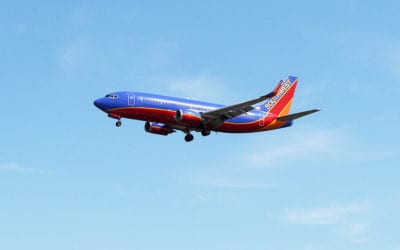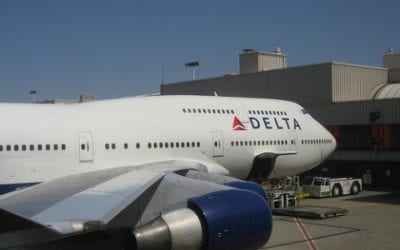Airlines have a lot for which to be thankful. I am certain that they are very thankful, however they are angling for more gifts from Congress, the airports, local communities, the Federal Aviation Administration (FAA) and the Department of Transportation (DOT).
The basic airline approach is to restrict market capacity, make comparison shopping more difficult, lean on Congress to legalize drip pricing and bait-and-switch advertising, squeeze more passengers into planes, restrict competition from independent foreign carriers, add new fees, keep airfares high, make frequent flier program elite levels more exclusive, enjoy record profits, swim in cheap oil and pay fewer taxes.
Today, we take a look at the limited competition world that the airlines have been allowed to create. There are fewer airlines flying with fewer flights than 15 years ago. At the same time demand has climbed for airline transportation. Higher demand, together with less supply, means that prices are going up. Airfares are increasing and extra fees are proliferating.
Tomorrow, we look at how airlines are managing to make more money using the same number of planes while appearing to keep airfares low. It is not slight of hand. More passengers in the same planes means record profits.
• Airlines have managed to achieve near monopoly status on domestic flights
With the consolidation of the industry through mergers and acquisitions, passengers are faced with fewer choices and far less competition than ever since the days of deregulation. Four major airlines — American, Delta, Southwest and Continental — control more than 85 percent of domestic routes. If all four flew on every route, that would be plenty of competition. However, on most routes only two of this group compete.
• Airlines, through the creation of airline alliances, have created an oligopoly for international airline service.
Through very questionable actions by DOT, US airlines and foreign carriers have been awarded antitrust immunity. This has allowed the creation of three major airline alliances — Oneworld, Skyteam and Star Alliance. These alliances control more than 80 percent of international flights.
Now the US airlines are fighting back against anyone who might threaten their international flight cabal. Airlines and airline unions are fighting a vicious battle against approval of expansion of the current Norwegian Air Shuttle transatlantic service with the formation of Norwegian Air International (NAI). This new airline already flies Boeing 787s transatlantic for around $500 round-trip.
The airlines are also attempting to roll back open skies agreements that opened international flights to additional service. As the demographics of the world shift with the fastest growing middle class now in South Asia and Africa, Middle Eastern airlines are perfectly situated to garner additional airline traffic. And, they are. This competition is anathema to US airlines which despise any kind of price competition.
Airlines are thanking the House of Representatives for turning their backs on consumers
In one of the most egregious legislative actions of the past year, the House of Representatives, on a bipartisan basis, proved that payoffs and swapping deals is more important than upholding decades of consumer protection rules. The creatively named Airfare Transparency Act of 2014 does everything except provide any “transparency.” Even with virtually every newspaper coming out against this misguided legislation, even supposed “friends of consumers” moved in lockstep to pass a bill that would enshrine into law drip pricing and bait-and-switch advertising with no debate and finally with only a handful of Representatives in the chamber on a voice vote.
Fortunately, because the bill is so misleading and goes against the grain of consumer protection, not one Senator could be found to sponsor companion legislation. So far, consumers have some protection from their own avaricious Representatives.
Oil prices are plummeting
Remember the days when every day brought a news story about the airlines whining about high fuel prices and the need to add hefty surcharges to flights in order to survive? Well, survive they did. Now, with oil prices dropping like a rock, has anyone heard about fuel surcharges being rolled back?
The price of oil is the biggest driver of airline expenses. Even as it goes lower and lower, no airlines are reducing their fuel surcharges commensurately.
Airlines are making record profits
All of the above anticompetitive activity is taking place against a backdrop of record airline profits. Today, airlines are raking in billions of dollars in profits. Airline stocks are sitting at the top of the performance metrics of the S&P 500. The days of suffering, high interest rates and bankruptcy are gone.
Airline executives are paying themselves lavishly with salaries in the millions of dollars and stock options that add more millions to their take. First Class and Business Class passengers have never been treated so well. Signature celebrity chefs are creating wonderful dining experiences for the front of the plane. Even airline unions are getting to the act, cozying up to management so as to share in the airline booty being taken from passengers.



